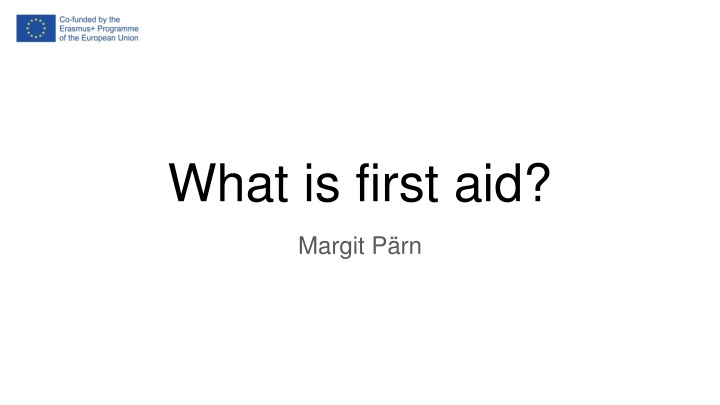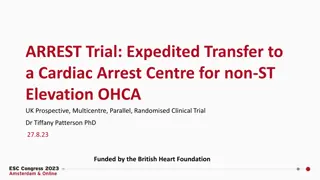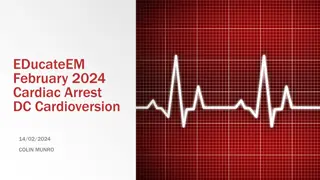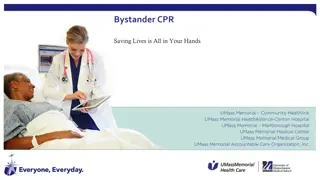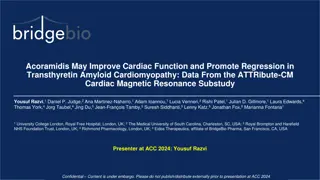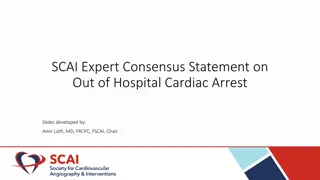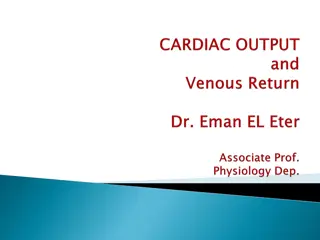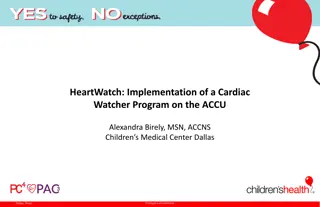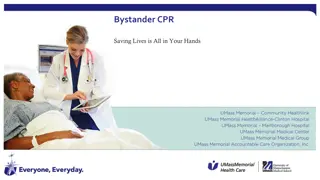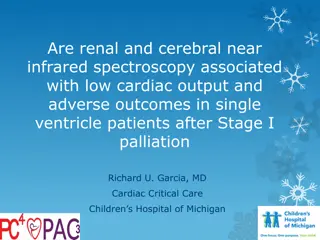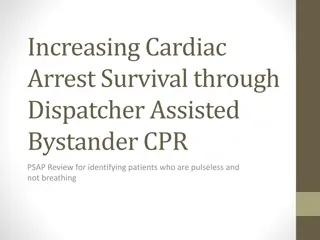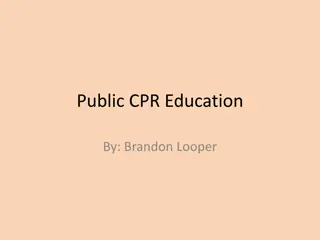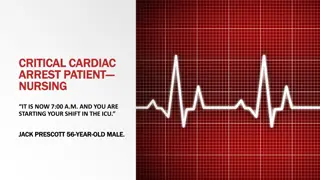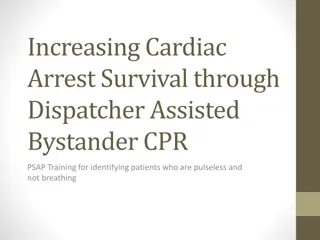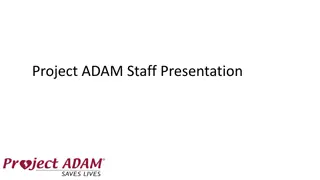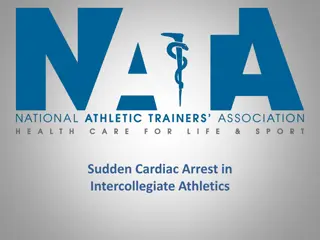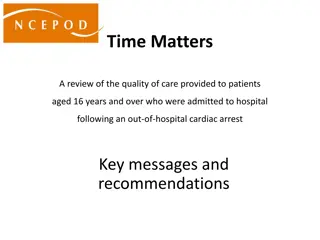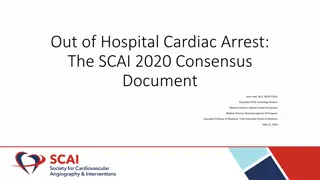Importance of Timely First Aid Response for Cardiac Arrest Victims
Many people underestimate the critical role of timely first aid in saving lives during cardiac arrest incidents. The first 5 minutes are crucial for brain cell viability, yet ambulance response times may not always be quick enough. Understanding the chain of events and the need for immediate bystander action can make a life-or-death difference. Proper knowledge and swift actions by individuals can bridge the gap until professional help arrives in emergency situations.
Download Presentation

Please find below an Image/Link to download the presentation.
The content on the website is provided AS IS for your information and personal use only. It may not be sold, licensed, or shared on other websites without obtaining consent from the author.If you encounter any issues during the download, it is possible that the publisher has removed the file from their server.
You are allowed to download the files provided on this website for personal or commercial use, subject to the condition that they are used lawfully. All files are the property of their respective owners.
The content on the website is provided AS IS for your information and personal use only. It may not be sold, licensed, or shared on other websites without obtaining consent from the author.
E N D
Presentation Transcript
What is first aid? Margit P rn
What is first aid? Many people shrug their shoulders when they hear the term first aid . It's a nice thing if you know something, but we have the ambulance, the rescue service, lifeguards and other people who get paid for it.
But let's imagine for a moment: Next to you a person starts to feel bad, he rubs his chest and suddenly falls down. You bow down to him and see that he is lying motionless on the ground and is probably not breathing. In Estonia, this situation happens about 9-10 times a day. The informed population knows exactly what to do. You have to grab the phone, dial 112 and wait for the ambulance to arrive. But is that enough for a person close to you to survive?
As soon as the victim's heart stops, a stopwatch starts ticking invisibly but inevitably. It only ticks for 5 minutes. This is the time when brain cells maintain viability under cardiac arrest if no one begins resuscitation. When 5 minutes have passed, the ambulance has not arrived yet, and no one has started resuscitation, then the time is finally over for this person. The heart can be restarted later, but the brain cannot recover. Therefore, the ambulance should arrive at the scene within 5 minutes of the onset of cardiac arrest. Will they arrive?
The chain of events following a cardiac arrest works in the same way in all developed countries. 1 minute - a bystander realizes that the condition of the fallen person is extremely serious, they search for a telephone, dial the emergency number, finally answers you: the alarm center hears. During the 2 minute caller explains to the rescue manager what they can see, the condition of the victim and where they are. 3 minutes - the alarm center encodes the call, searches for the nearest available brigade and passes the call on to them by telephone. 4 minutes - the ambulance must travel for quick calls within one minute. This is the time it takes for the car to drive out of the garage, the brigade to step in and to report its departure via the radio.
So, 4 minutes have passed since the moment of the cardiac arrest and the ambulance has not moved a centimeter. Only information has moved, and the same has happened in Estonia, Norway, Bulgaria, Romania or The Republic of North Macedonia. How far does an ambulance get in 1 minute? Next door, to the nearest intersection? Hardly beyond. Therefore, an ambulance cannot participate in rescuing a person in the first minutes. There is only a fellow citizen next to the victim, and their actions determine whether these 5 minutes equate to eternity for the victim or only the five most difficult minutes of this person s life.
In several countries, the concept has been developed that it is much cheaper and more effective to teach the population, from kindergarten to senior clubs to perform first aid, than to put ambulances every 10 kilometers. The earlier the introduction of first aid truths begins, the better it becomes part of the future citizen's worldview. Along with first aid, however, children would be given something else - a desire to help, empathy, reverence for life - values that can no longer be passed on to an adult.
First aid training is a place where a child can unknowingly become aware of a different lifestyle. This happens unnoticed, because it works much more effectively than colored posters about healthy food on school walls. This would save tens of thousands of lives in the long run. Seeing a person next to you, realizing that his or her life depends on our knowledge and actions, gradually leads us to realize that it is ugly to be happy, rich, and successful all alone. I notice a person next to me - I can make him happier! I can revive, I can save a person!
Learning process Acquisition of skills - the aim is to achieve automatic, accurate and skilful performance of the learned activity. In automatic movement, you no longer think about performing an action, but focus more on the goal. Information important to separate A child will not start learning if he or she does not have an interest in learning. The material or tasks are in a logical order and gradually become more complex.
Demonstration Accidents in real life Learning simulators Examples Pictures. Drawings, tables, charts Tools Layouts Educational films, slides
An active learner thinks along with the teacher. Lesson structure: Introduction - to arouse interest in the topic Giving an overview of what is being taught Transfer of knowledge Repetition Termination Children must be kept motivated throughout the learning process! Repetition occurs at the end of each topic or lesson.
